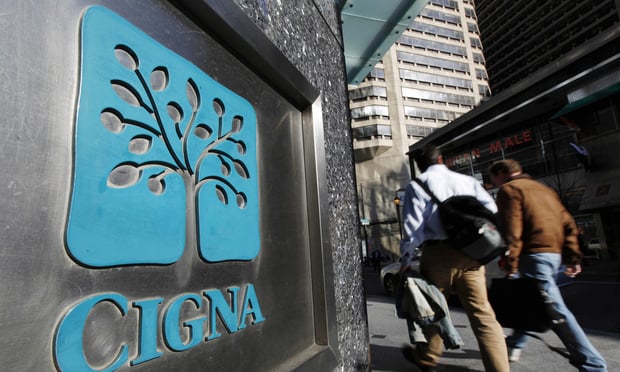Now that the American Health Care Act has failed to advance,small businesses, and the brokers who serve them, are looking forways to manage health care costs within the status quo of theAffordable Care Act (ACA).
|As it did with individuals, the ACA community rating methodologybenefitted some while burdening others. The community ratingmethodology spreads the costs associated with the differing risk ofgroup (or individual) profiles over the entire risk pool. In thecase of small groups, older and/or sicker groups benefitted fromlower rates while younger and/or healthier groups pay more. Thosesmall groups for which this “peanut-buttered” risk solution hasresulted in increases to their health insurance may want to look atlevel-funded plans, an alternative to fully-insuredplans.
|Large groups have long been able to self-insure their health care coverage. Under aself-insured plan, employers directly cover the costs of theiremployees’ medical expenses. The employer is not subject to all ofthe required coverages, or essential benefits, that are core to theACA. And, the employer is covered against extraordinary coststhrough participation in an insurance captive or through stop-lossinsurance. Small groups, however, have not had the scale, systems,process or sophistication to self-insure. In short, it has been tooonerous and risky for them to self-insure. Enter level-fundedplans.
|Level-funded plans are essentially pre-packaged self-insured health plans, with low attachmentstop-loss coverage, that are now being marketed in most states togroups as small as 10 employees. Level- funded plans are beingoffered by commercial carriers and by a host of other third partyadministrators (TPAs). For the right groups, level-funded plans cansave 30 percent versus a fully insured ACA small-group plan. Andbecause of their structure, level-funded plans do not have thevolatility in monthly cash flows, associated with self-insuredplans, that can cripple a small business.
|Here’s how a level-funded plan works. First, like large-groupplans, level-funded plans are underwritten. Consequently, they tendto be attractive to healthier groups. A census is provided to theTPA, who determines a monthly cost comprised of three elements,each roughly representing one-third of the monthly payment: aclaims allowance, a TPA fee, and a premium for stop-losscoverage. This consistent, or level, amount is funded by thecompany each month. The claims allowance goes into an accountfrom which employee medical costs are funded. The TPA feegoes towards paying for the administration of the program,including adjudicating claims. And the stop-loss premium goestowards that coverage. As claims come in on a monthly basis,the TPA pays them out of the claims allowance. If there is anextraordinary claim on an individual or aggregate basis, thestop-loss kicks in. In no case does the employer have to paymore than the level amount.
|At the end of the year, the performance of the group isevaluated. If the group has performed well, some of thatclaim allowance may be returned to the group. And the group maybenefit from a lower “rate” for the next year on the basis that themonthly allowance should be less, as should the premium for thestop loss. If the group performs as originally expected,there should be little or no increase — a rarity in the ACAworld.
|But what if the group has a really bad year? In a bad year, thestop-loss kicks in to protect the employer. Again, the entireconcept of the level-funded plan is that the employer never has topay more than the level monthly amount. But as anunderwritten plan, it is reasonable to expect an increase — perhapseven an untenable increase — in the level-funded plan. Hereis where it really gets interesting. Today, in such asituation, the group can simply revert back to a community-ratedACA plan. Here, small groups have an advantage that largegroups do not: they can revert back to a non-underwritten plan; onethat is likely to be to their financial benefit.
|So, for small groups, the question is why not explore alevel-funded plan? With savings of up to 30 percent,protection against extraordinary costs, and the ability to fallback on an ACA plan, there is very little reason not to doso.
|If it is so easy and beneficial, why are more small groups notmigrating to level-funded plans? There are severalreasons. First, in a handful of states (including New Yorkand California), small-group, level-funded plans are not availablebecause the states’ departments of insurance regulate the stop-loss attachment level, which dictates atwhat level the stop-loss can kick in. In short, these statesdo not allow the low attachment level required for a small-group,level-funded plan. Interestingly, legislation has beenintroduced at the federal level (H.R. 1304) to affirm that medicalstop-loss is not health insurance and cannot be regulatedas such.
|Second is awareness. Level-funded plans are more complex,and many brokers serving small-group clients have not been trainedon their structure, implementation and costs. Further, mostdigital health insurance sales and quoting platforms today, whethergroup and/or broker-facing, do not include level-fundedplans. Some are addressing this by displaying “illustrative”quotes, subject to underwriting, to surface the cost savings ofthese plans.
|The third reason is the momentum of fully insured small-groupplans. For many businesses and brokers, it is just easier toroll their existing, or similarly configured, plan forward anotheryear.
|And finally, there have been some disreputable players offeringlevel-funded plans. Poorly structured, these plans can leave abusiness, and its employees, at risk.
|If you serve small-group clients of more than 10 employees, youmay well want to consider a level-funded plan. It’s importantto be well versed in these products. In the end, you may be able tosave your client up to 30 percent on its health care costs, anenticing opportunity for any small business.
Complete your profile to continue reading and get FREE access to BenefitsPRO, part of your ALM digital membership.
Your access to unlimited BenefitsPRO content isn’t changing.
Once you are an ALM digital member, you’ll receive:
- Critical BenefitsPRO information including cutting edge post-reform success strategies, access to educational webcasts and videos, resources from industry leaders, and informative Newsletters.
- Exclusive discounts on ALM, BenefitsPRO magazine and BenefitsPRO.com events
- Access to other award-winning ALM websites including ThinkAdvisor.com and Law.com
Already have an account? Sign In
© 2024 ALM Global, LLC, All Rights Reserved. Request academic re-use from www.copyright.com. All other uses, submit a request to [email protected]. For more information visit Asset & Logo Licensing.








